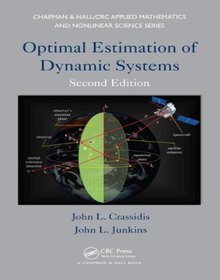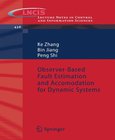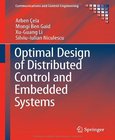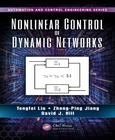Optimal Estimation of Dynamic Systems
2nd Edition

Book Details:
| Publisher: | Chapman and Hall/CRC |
| Series: | CRC Press |
| Author: | John L. Crassidis |
| Edition: | 2 |
| ISBN-10: | 1439839859 |
| ISBN-13: | 9781439839850 |
| Pages: | 749 |
| Published: | Oct 26 2011 |
| Posted: | Nov 19 2014 |
| Language: | English |
| Book format: | |
| Book size: | 8.18 MB |
Book Description:
Optimal Estimation of Dynamic Systems, Second Edition highlights the importance of both physical and numerical modeling in solving dynamics-based estimation problems found in engineering systems. Accessible to engineering students, applied mathematicians, and practicing engineers, the text presents the central concepts and methods of optimal estimation theory and applies the methods to problems with varying degrees of analytical and numerical difficulty. Different approaches are often compared to show their absolute and relative utility. The authors also offer prototype algorithms to stimulate the development and proper use of efficient computer programs. MATLAB codes for the examples are available on the books website. New to the Second EditionWith more than 100 pages of new material, this reorganized edition expands upon the best-selling original to include comprehensive developments and updates. It incorporates new theoretical results, an entirely new chapter on advanced sequential state estimation, and additional examples and exercises. An ideal self-study guide for practicing engineers as well as senior undergraduate and beginning graduate students, the book introduces the fundamentals of estimation and helps newcomers to understand the relationships between the estimation and modeling of dynamical systems. It also illustrates the application of the theory to real-world situations, such as spacecraft attitude determination, GPS navigation, orbit determination, and aircraft tracking.
Download Link:
Related Books:
Observer-Based Fault Estimation and Accomodation for Dynamic Systems
Due to the increasing security and reliability demand of actual industrial process control systems, the study on fault diagnosis and fault tolerant control of dynamic systems has received considerable attention. Fault accommodation (FA) is one of effective methods that can be used to enhance system stability and reliability, so it has been widely and in-depth investigated and become a hot topic in recent years.Fault detection is used to monitor whether a fault occurs, which is the first step in FA. On the basis of fault detection, fault estimation (FE) is utilized to determine online the magnitude of the fault, which is a very important step because the additional controller is designed using the fault estimate. Compared with fault detection, the des...
Optimal Design of Distributed Control and Embedded Systems
Optimal Design of Distributed Control and Embedded Systems focuses on the design of special control and scheduling algorithms based on system structural properties as well as on analysis of the influence of induced time-delay on systems performances. It treats the optimal design of distributed and embedded control systems (DCESs) with respect to communication and calculation-resource constraints, quantization aspects, and potential time-delays induced by the associated communication and calculation model.Particular emphasis is put on optimal control signal scheduling based on the system state. In order to render this complex optimization problem feasible in real time, a time decomposition is based on periodicity induced by the static scheduling is op...
Nonlinear Control of Dynamic Networks
Significant progress has been made on nonlinear control systems in the past two decades. However, many of the existing nonlinear control methods cannot be readily used to cope with communication and networking issues without nontrivial modifications. For example, small quantization errors may cause the performance of a "well-designed" nonlinear control system to deteriorate. Motivated by the need for new tools to solve complex problems resulting from smart power grids, biological processes, distributed computing networks, transportation networks, robotic systems, and other cutting-edge control applications, Nonlinear Control of Dynamic Networks tackles newly arising theoretical and real-world challenges for stability analysis and control d...
2007 - 2021 © eBooks-IT.org



